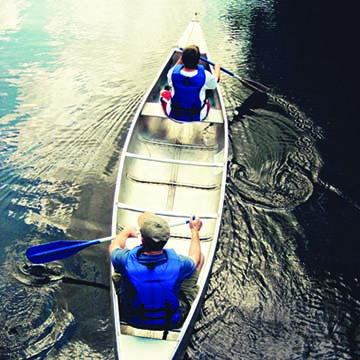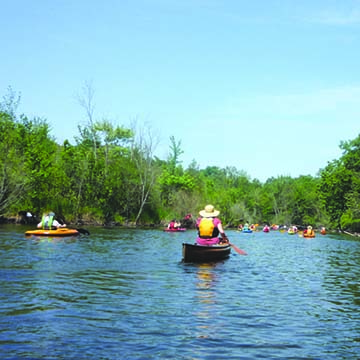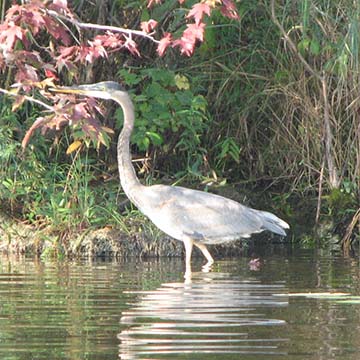Have Fun, Stay Safe
Safety is an important concern in all outdoor activities. No map can alert you to every hazard or anticipate the limitations of the trail user. Therefore, the descriptions of the trail on this website are not representations that a particular excursion or place will be safe for your party. When you follow the trail, you assume responsibility for your own safety.
Pay attention to traffic, water, road, and trail conditions, weather, terrain, the capabilities of your party, and other factors. Keeping informed on the current conditions and exercising common sense are the keys to a safe, enjoyable outing.
Safety Information
The two main reasons that river users get into trouble:
- They aren’t wearing a life jacket (also called a PFD or portable floatation device)
- They overestimate their skills and underestimate the river
Safe paddling requires preparation, proper equipment, and experience. Canoeing and kayaking can be dangerous. The river creates constantly changing conditions and hazards, such as strainers (brush piles and log jams that allow the current to flow through while holding you). Follow these tips for a safe trip down the river:
- Always wear a properly fitting life jacket when on the water. Adjust it to be snug and comfortable. It should not lift up when pulled by the shoulders.
- Impairment equals accidents. Do not go paddling if you should not be driving. Drinks and drugs are even more hazardous on the water.
- Know your limits. If you aren’t comfortable in the conditions you are in, return to shore.
- Know whether and where hazards and mandatory portages exist.
- Choose a trip length appropriate for the time available, such as limited daylight in the winter.
- Dress appropriately for weather and water conditions, including air and water temperatures. Avoid hypothermia, and carry spare dry clothes.
- River footwear is advised, especially in whitewater sections.
- Know how to get help in case of an emergency, including escape trails and roads near the river.
- Beware of flow levels and the recommended flow amounts for the section to be paddled.
Share the River Code
Users of the Huron River Water Trail agree to abide by the Share the River code of conduct from American Whitewater. Whether interacting with local residents or other river users such as anglers and boaters, paddlers have a responsibility to be good ambassadors of the paddling community. Use the following common sense guidelines on the river and when traveling to and using river access areas:
- Be a competent swimmer with the ability to handle oneself underwater, in moving water or current
- Drive courteously and within the speed limit (Good driving etiquette, particularly in residential areas, is essential for maintaining positive relationships with those that live near paddling destinations)
- Park in designated areas making sure not to block driveways or interfere with traffic
- Change clothes discreetly
- Do not play loud music
- Be courteous to other river users at all times
- Follow the laws and rules of the area you are using
- Look after the natural environment – avoid damaging the riverbanks and vegetation.
- Protect native species and habitats – use dry or disinfected equipment
- Take a few moments to pick up litter left by others
- Follow the seven principles of Leave No Trace to keep the Huron River healthy and beautiful!
Portaging around a dam?
Watch our how-to portage video at Argo Dam in Ann Arbor.
Need to know river conditions?
Check HERE for important information including advisories on PFAS.





